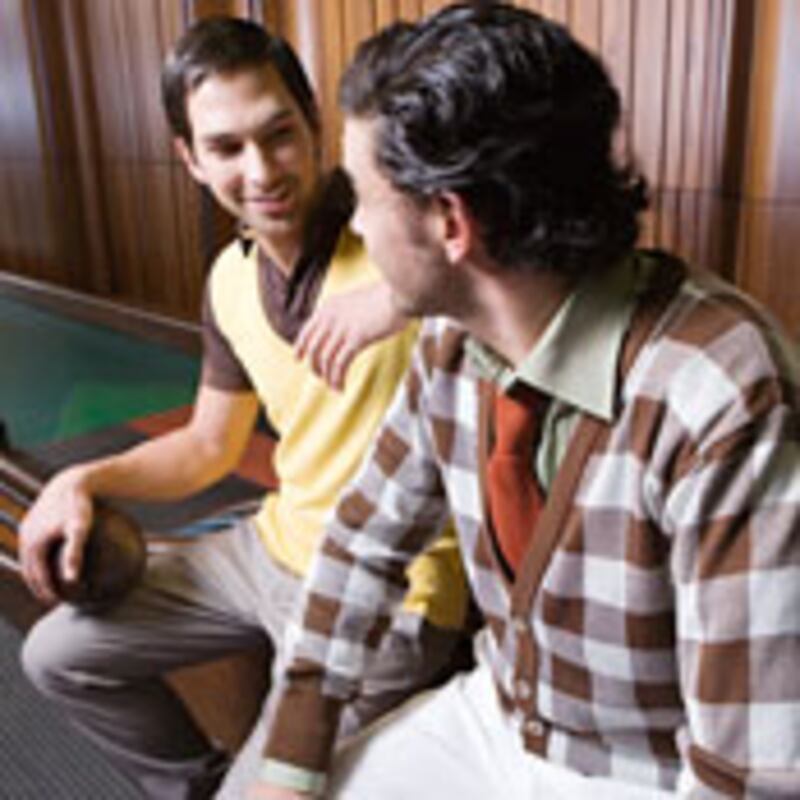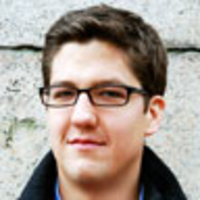
What does it mean to be preppy in 2010?
This question is the crux of Lisa Birnbach and Chip Kidd’s hilariously prim (and sometimes proper) new book, True Prep, to be released on the 30th anniversary of the publication of The Official Preppy Handbook, Birnbach’s first witty guide to the clubby, musty culture of WASPs. In the 1980s, The Official Preppy Handbook was the definitive style bible for well-to-do East Coast elites, a must-have for any Ivy League freshman. Now Birnbach, a writer, and Kidd, Knopf’s art director, bring us the remix, pulling from that same time-honored trunk of preppy pastimes and adding a refreshing twist of the new.
Birnbach and Kidd prove that there’s a lot about preppies that you probably never knew.
In fact, True Prep delves deep down into contemporary culture, showing that despite the slew of shifts over the last three decades—“the maid quitting, the middle class disappearing, your running out of vodka, your NetJet account being yanked, and the Internet,” as Birnbach writes in the introduction—plenty of preppies have evolved with the times and still thrive today. What’s more, Birnbach and Kidd’s book proves that there’s a lot about preppies that you probably never knew, nor did I, despite my own preppy background—boarding school, a good beat-up pair of Sperry top-siders, and, well, did you notice my name? To the contrary, I discovered a culture far more widespread—and diverse—than I ever imagined. In the 21st century, prepsterdom is pervasive.
The Preppy Demographic
White, black, gay, straight, Christian, Jewish, Muslim: Preppies have diversified quickly. They’re no longer just the boarding school-bred, Ivy League-educated, old-money crowd. They don’t stick to East Coast burgs like Boston and Newport, Rhode Island. They’re in cities as far afield as New Orleans and Columbus, Ohio. They’re at Oak Bluffs and Sag Harbor, black resort towns that have existed for generations, but have been integrating—and getting preppier—since the mid-1960s. And they’re prevalent at many gay hangouts, too: Provincetown, Massachusetts, say, or Yale University (“definitely the gayest of the Ivy League universities,” as the author Edmund White writes in an essay in True Prep). There are even enough preppy lesbians for Birnbach to dub them “presbians.” Don’t forget pets, either, especially dogs, whose names alone are preppy. Consider Gwyneth Paltrow’s black Labrador retriever Holden or, more famously, Mildred “Millie” Kerr Bush, President George H. W. Bush’s springer spaniel. Chances are, someone you know—or someone’s dog, anyway—is a preppy. As Birnbach writes of the formerly WASP demographic, “One day we became curious or bored and wanted to branch out, and before you knew it, we were all mixed up.”
The Preppy Workforce
Gone are the prep-proof jobs of yore, such as the assistant editor, the media escort, or the fundraiser. 2010’s post-recession economy calls for new preppy careers, some of which True Prep describes candidly. Sure, several classic routes remain: the alumni director (“for the good of your school”), senator (“for policy wonks”), ne’er-do-well (“Uncle Tony”), and ski bum (“self-evident”). But the book points out that there are growing fields as well: the serial entrepreneur, say, or the vineyard owner (“ultimate career move”). Not-for-profit jobs, in particular, are prep. As Birnbach writes, they possess a “mysterious benefactor” because “you’re not doing it for the money.” Writing ambitions (though not necessarily jobs) are preppy, too, as are event-planning positions. There’s also the essential, albeit fading, preppy go-to that is the Wall Street investment banker—a career path that House of Cards author William D. Cohen describes in True Prep as “the black hole for the best and brightest preppies because it paid by far the most money to people without any particular gift.”
The Preppy Palate
Preppies used to be known for their bland, if not bizarre, recipes. By contrast, new-wave preppy eaters are, as Birnbach puts it, “foodies-in-training.” That’s not to say, though, that preppy cooking has improved entirely. Ritz crackers are still a part of the diet (see: “The Ultimate New Canaan Nibble,” a Kraft individual sharp-cheddar single, a box of Ritz crackers, and French’s mustard), and Old Bay seasoning comes standard on just about everything. The book’s recipes for codfish cakes, shepherd’s pie, and Lipton’s meatloaf suggest, however, that preppy palates may be expanding. “In addition to the exotic food we now attempt to cook,” writes Birnbach, “we go out to ethnic restaurants. We love cold sesame noodles, and Peking Duck, burritos and fajitas—even fish tacos are now a comfort food. Pad Thai, coconut soup, tikka masala, curried goat, sashimi, and crudo. … We’ve branched out, and we’re a little proud of ourselves.”
The Preppy Canon
As preppies have proliferated in society so have the books, movies, and plays based on them. Some preppy novels are obvious—J.D. Salinger’s Catcher in the Rye, for example, or John Knowles’ A Separate Peace. Enough prep-school literature now exists, though, to form an entire course—or even canon—on the subject. Which is exactly what Sam Prouty, an English instructor at the Hotchkiss School in Connecticut, decided to do starting in 2005. Ethan Canin’s 1994 short story “The Palace Thief,” Alan Bennett’s 2004 play The History Boys, and Curtis Sittenfeld’s 2005 novel Prep, along with supplemental films like Dead Poets Society (1989), Outside Providence (1999), and Igby Goes Down (2002), are among the texts currently taught in Prouty’s “college-style elective.”
The Preppy Wadrobe
J.Crew published its first catalogue in 1983, just three year’s after the release of The Official Preppy Handbook, and has gone on to open more than 300 bricks-and-mortar stores. Inspired by a crop of other top preppy clothiers—J. Press, Brooks Brothers, L.L. Bean—J. Crew was at the forefront of would become, in the 1990s and 2000s, a mass-market makeover for preppy garb, with companies like Vineyard Vines and Tory Burch following suit. Another major change in preppy wardrobes: the introduction of, as Birnbach puts it, “the unnatural fibers we collectively refer to as ‘fleece.’” Started by Patagonia in 1981, when the company formed a partnership with Malden Mills, a Massachusetts textile manufacturer, the result was a material the company marketed as Synchilla. Oodles of preppy synthetic threads from The North Face, Land’s End, REI, and other brands came after.
The Preppy Celebrity
True Prep points out that two-tenths of one percent of all high-school students in America attend boarding school. “There are approximately 17 million high-school students in the United States,” writes Birnbach, “and 35,000 of them are enrolled in college preparatory boarding schools.” Those figures are somewhat shocking. What’s more shocking, however, is the number of celebrity prep-school graduates in politics, media, the arts, and other high-profile positions. George W. Bush (and his father), for example, went to Phillips Academy, a Massachusetts boarding school that’smentioned in the book 14 times. Family Guy creator Seth MacFarlane, The Office’s Steve Carell, New Mexico Governor Bill Richardson, Phish guitarist Trey Anastasio, and The Da Vinci Code author Dan Brown attended New England boarding schools, too. All of which may suggest why Paper Magazine’s editor-at-large Peter Davis—a boarding school grad himself, no less—describes in True Prep another emerging prep institution: tony rehab facilities. “Like boarding schools,” he writes, “rehabilitation centers are exclusive and expensive.”
Plus: Check out Book Beast, for more news on hot titles and authors and excerpts from the latest books.
Spencer Bailey works for The Daily Beast and has written for Bloomberg Businessweek, Esquire.com, VanityFair.com, and elsewhere.






